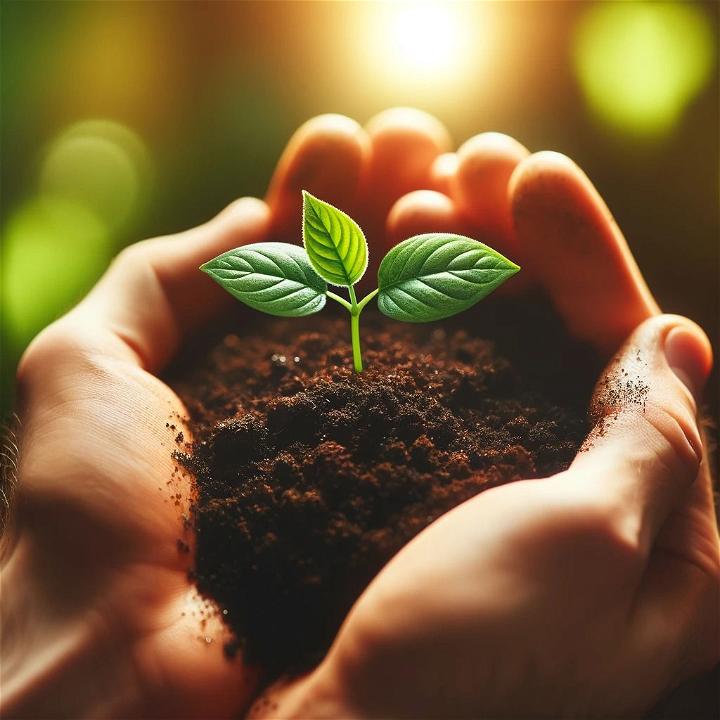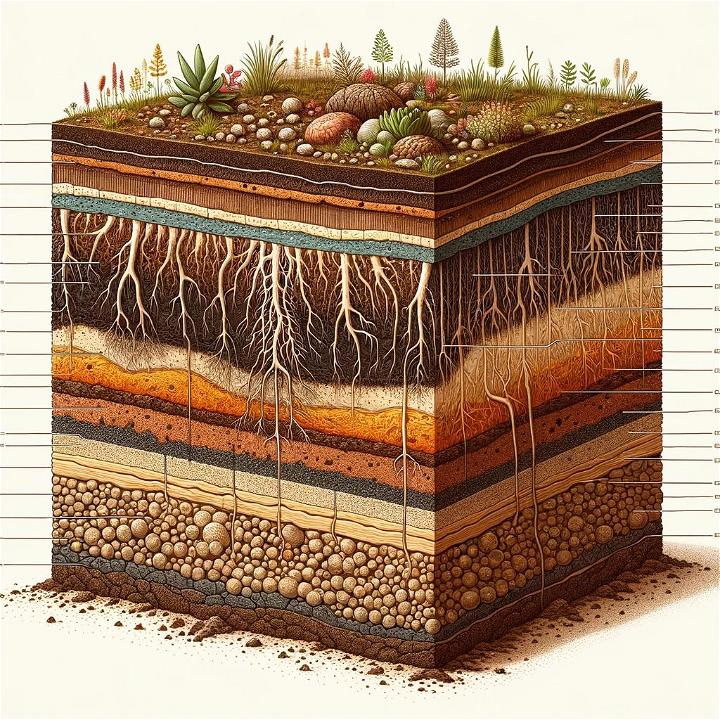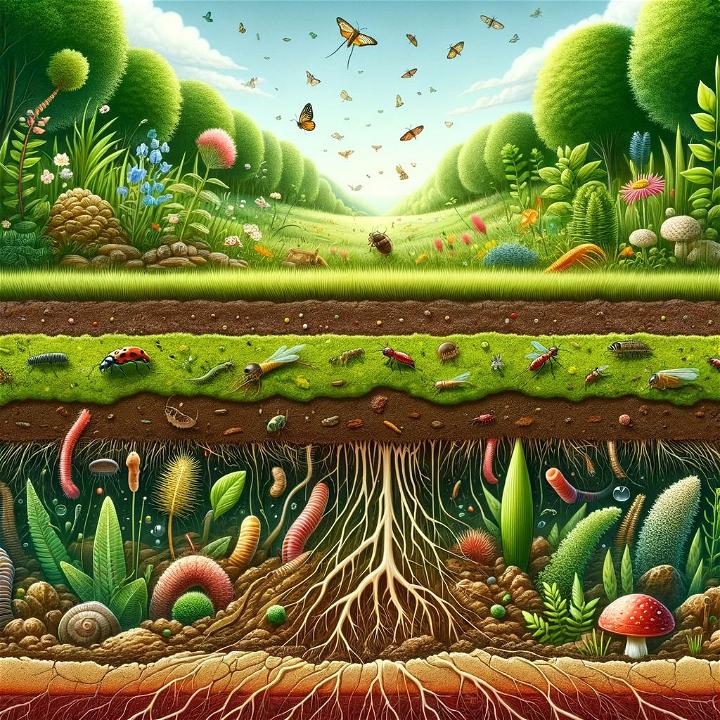Soil, often overlooked but profoundly essential, is the foundational component that sustains life on Earth. Have you ever paused to ponder why soil is so crucial to our existence? Let’s delve into the pivotal role soil plays in supporting ecosystems and ensuring human survival.
From filtering water to providing vital nutrients for forests and crops, soil serves as the backbone of our planet’s ecosystem. It acts as a seamless reservoir, holding water and storing nutrients that are indispensable for the growth of plants and the balance of entire ecosystems.

Moreover, soil helps regulate the Earth’s temperature, contributing to the overall stability of our climate. As our world evolves, understanding the significance of soil resilience becomes increasingly critical. Thrilled by its complexity, scientists continue to unravel the mysteries of soil and its impact on our environment.
Here, we will embark on a quest to explore the complexness of soil and why soil is important in the realm of sustainability. By the end of this journey, you will gain a deeper appreciation for the unsung hero beneath our feet and the profound impact it has on the world around us.
The Fundamental Role of Soil
Soil plays a vital role in sustaining life on Earth through its multifaceted functions. Let’s explore the fundamental aspects that highlight the importance of soil in various ecosystems.

Nutrient Cycling and Plant Growth
Soil serves as a reservoir of essential nutrients crucial for plant growth. Nutrients such as nitrogen, phosphorus, and potassium are stored in the soil, sustaining agriculture and ecosystem productivity. This process is pivotal in providing plants with the necessary elements for their development, contributing to the lush greenery we witness in nature.
The significance of soil in agriculture cannot be overstated. It acts as a primary source of vital nutrients that plants require to thrive. By supporting nutrient cycling, soil ensures that crops receive the nourishment needed to produce food for humans and animals. The intricate balance of nutrients within the soil is a cornerstone of sustainable agriculture practices.
Water Filtration and Regulation
Another crucial role of soil is in water filtration and regulation. Soil acts as a natural filter, purifying water as it percolates through the layers. This process helps maintain water quality by removing impurities and contaminants, ensuring access to clean water for various organisms.
In addition to filtration, soil plays a significant role in regulating the water cycle. By absorbing and storing water, soil helps prevent floods by acting as a buffer during heavy rainfall. This regulation mechanism is essential for maintaining a balanced water supply in ecosystems, supporting plant and animal life.
Erosion Control and Habitat Support
Soil serves as a natural protector against erosion, anchoring plants and preventing the loss of fertile topsoil. By minimizing erosion, soil conservation practices maintain the integrity of landscapes and ensure the sustainability of agriculture. The habitat provided by soil supports a diverse range of organisms, from tiny microbes to larger animals, fostering biodiversity.
The rich biodiversity found in soil ecosystems is crucial for maintaining ecological balance. Soil supports intricate food webs and nutrient cycles, creating a harmonious environment where different species coexist and thrive. Protecting soil habitats is essential for preserving the delicate balance of nature and promoting a healthy and sustainable ecosystem.
Soil’s Impact on Climate and Environment
Soil plays a crucial role in shaping our climate and environment, serving as a vital player in mitigating climate change and maintaining ecological balance.
Carbon Sequestration and Climate Change Mitigation
Soil acts as a significant carbon sink, storing carbon that would otherwise contribute to greenhouse gas emissions. Healthy soils play a pivotal role in reducing the levels of carbon dioxide in the atmosphere, thereby helping mitigate the impacts of climate change. By fostering rich biodiversity and microbial activity, soil can enhance carbon sequestration, making it an essential ally in the fight against global warming. Utilizing sustainable soil management practices can further bolster these efforts, ensuring a healthier planet for future generations.
Soil as a Carbon Sink and Climate Regulator
In the intricate web of climate regulation, soil emerges as a vital component. Its ability to absorb and retain carbon not only aids in mitigating climate change but also helps in maintaining environmental equilibrium. By acting as a natural carbon sink, soil prevents excessive carbon from saturating the atmosphere, thus regulating temperature and climate patterns. This balance is crucial for sustaining diverse ecosystems and safeguarding against the detrimental effects of climate change.
By understanding and harnessing the potential of soil as a formidable force in climate change mitigation, we can pave the way for a more sustainable and harmonious relationship between humanity and the environment.
For more information on the importance of soil in combatting climate change, you can refer to articles such as Can Soil Help Combat Climate Change? and Soils help to combat and adapt to climate change.
Human Dependency on Soil
Soil is a fundamental aspect of human life, shaping our existence in intricate ways that often go unnoticed. Let’s delve into how humans are reliant on soil for various critical facets of our well-being.

Food Security and Agricultural Sustainability
The significance of soil for human life is most palpable in the realm of food security and agricultural sustainability. Soil acts as the anchor for agricultural practices, supporting crop growth and ensuring bountiful harvests. The quality of soil directly impacts crop yields, determining the success of farming endeavors and influencing the availability of food resources for human consumption. By nurturing healthy soil, we pave the way for sustainable agriculture, enhancing not only our ability to feed populations but also promoting a balanced ecosystem where agriculture thrives. Soil’s role in boosting crop nutrition underscores its pivotal contribution to human health and sustenance.
Medicinal Resources and Ecological Balance
Beyond serving as a foundation for agriculture, soil holds a treasure trove of medicinal resources essential for human well-being. Many pharmaceuticals and natural remedies originate from plants that rely on soil for their growth and nutrient uptake. Soil’s role as a source of medicinal plants highlights its importance in the healthcare industry and underscores the need to preserve diverse soil ecosystems to safeguard these valuable resources. Moreover, soil plays a crucial part in maintaining ecological balance by serving as a habitat for a myriad of organisms that form the intricate web of life on Earth. Preserving soil biodiversity is not just a matter of environmental concern but a necessity for ensuring the resilience and sustainability of ecosystems that support human life.
By recognizing and appreciating the multifaceted role of soil in sustaining human existence, we can cultivate a deeper understanding of our dependency on this vital resource. Soil stands as a silent yet indispensable ally, nurturing life in ways both seen and unseen, weaving a seamless tapestry of interconnectedness that underpins our collective well-being.
Conservation and Restoration Efforts
Soil health initiatives play a pivotal role in promoting sustainable agriculture practices aimed at preserving the fertility of our soil. Programs like the Soil Health Principles and Practices emphasize the importance of healthy soil as the foundation of productive agriculture. By incorporating sustainable practices such as crop rotation, cover cropping, and reduced tillage, farmers can improve soil structure, enhance nutrient retention, and minimize erosion risks. Technological innovations, such as precision agriculture and soil sensors, enable farmers to make data-driven decisions to optimize crop production while conserving soil health (Learn more).
Soil Health Initiatives and Sustainable Agriculture
- Crop Rotation: Rotating crops helps maintain soil fertility and reduces the buildup of pests and diseases.
- Cover Cropping: Planting cover crops like legumes and grasses helps prevent soil erosion and improves soil quality.
- Reduced Tillage: Minimizing tillage practices conserves soil structure, reduces soil compaction, and preserves beneficial soil organisms.
Community engagement plays a vital role in soil conservation efforts, creating a network of individuals committed to preserving our natural resources. Collaborative efforts raise awareness about soil health and promote environmentally friendly practices. Community participation in soil and water conservation is crucial for mitigating the impact of human activities on soil erosion and ensuring the sustainable use of soil resources. By mobilizing incentives and initiatives, communities can actively contribute to ongoing conservation efforts (Read more).
Community Engagement and Environmental Advocacy
- Awareness Campaigns: Informing communities about the significance of soil conservation and its impact on the environment.
- Incentive Programs: Offering incentives to encourage community participation in conservation projects.
- Capacity Building: Providing training and education on sustainable practices to empower communities to take proactive steps in soil conservation.
By fostering a culture of collaboration and environmental stewardship, we can work together to protect the invaluable resource that is our soil.
FAQs
Have questions about the importance of soil in agriculture? Here are some common queries answered:
1. Why is soil important for agriculture?
Soil is the foundation of agriculture, providing essential nutrients and support for plant growth. Without healthy soil, crops would struggle to thrive, impacting food production worldwide. Understanding the role of soil in agriculture is key to sustainable farming practices.
2. How does soil quality affect crop yield?
The quality of soil directly influences crop yield. Nutrient-rich soil fosters healthy plant growth, leading to higher yields. Soil health impacts water retention, root development, and overall plant productivity. Farmers often employ soil testing and management practices to optimize crop yields.
3. What are the key nutrients in soil for plant growth?
Soil contains essential nutrients like nitrogen, phosphorus, potassium, and micronutrients crucial for plant development. These nutrients are absorbed by plants through their roots, supporting functions like photosynthesis, flowering, and fruit production. Understanding nutrient cycles in soil is vital for maintaining fertile farmland.
4. How can farmers improve soil health?
Farmers can enhance soil health through practices like crop rotation, cover cropping, organic matter additions, and reduced tillage. These methods promote biodiversity, increase soil organic carbon content, and improve microbial activity. Healthy soil leads to sustainable agricultural practices and resilient ecosystems.
Conclusion
Soil, the unsung hero beneath our feet, plays a pivotal role in sustaining life on Earth. It is not merely dirt but a dynamic ecosystem that nourishes our crops, filters our water, and supports essential nutrients for plant growth. Without healthy soil, our very existence would be at stake. It’s time we recognize the profound impact soil has on our daily lives and the well-being of future generations.
Let’s embark on a quest to value and protect this precious resource, for in preserving the soil, we secure a sustainable future for all living beings. Together, let’s champion the resilience of soil and ensure its seamless integration into our efforts towards a thriving and harmonious environment. The time to act is now, for the soil is not just dirt but the lifeline of our planet.
Explore More About Soil: Relevant Articles and Resources
Discover valuable articles and resources on soil. Expand your knowledge and unearth insights with Explore More About Soil.
- Phosphorus Addition to Soil: Practical steps to enrich your soil with phosphorus, fostering robust plant growth.
- Finding Loam Soil: A detailed guide for beginners on sourcing high-quality loam soil, crucial for gardening success.
- Benefits of Topsoil: Discover the significant uses and advantages of topsoil in your garden for improved plant health.
- Topsoil Use Mistakes: Learn how to avoid common topsoil errors for a more productive and healthier garden.
- Soil Types Overview: Our guide offers a comprehensive exploration of different soil types, enhancing your gardening knowledge.
- Natural Soil Improvement: Effective soil amendment techniques for natural, healthy garden growth.
- Elevating Soil pH: Simple, effective methods to increase soil pH for healthier plant life in your garden.
- Lowering Soil pH: Effortless strategies to reduce soil pH for optimal growth of acid-loving plants.
- Soil pH Home Testing: An easy-to-follow guide for testing soil pH at home, essential for garden care.
- Loam Soil Guide: The ultimate resource on what is loam soil, detailing its importance for gardeners.
- Soil Composition and Types: Insight into soil’s composition, types, and functions, the backbone of healthy gardening practices.
